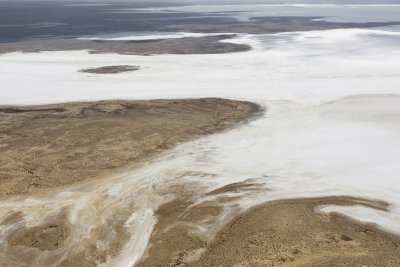 Oceania does not have large natural lake basins, if we exclude the Australian salt lakes, which are, however, almost all of the time without water and fill up partially and very rarely completely on a few occasions and for short periods of time.
Oceania does not have large natural lake basins, if we exclude the Australian salt lakes, which are, however, almost all of the time without water and fill up partially and very rarely completely on a few occasions and for short periods of time.The first two 'true' major lakes in Oceania are found in Papua New Guinea and New Zealand, two nations much richer in natural water resources than Australia.
Given the geographical location or the small area of most of the other islands of the continent, we do not find lakes larger than one hundred square kilometers in other countries, the only exception being Te'Nggano, on the island of Renner in the Solomon archipelago.
| Lake | Area (km²) |
Area (sq mi) |
Country |
| Eyre (1) | 9,500 | 3,668 | Australia |
| Torrens (2) | 5,745 | 2,218 | Australia |
| Gairdner (3) | 4,351 | 1,680 | Australia |
| Mackay (4) | 3,494 | 1,349 | Australia |
| Murray (5) | 647 | 250 | Papua New Guinea |
| Taupo (6) | 613 | 237 | New Zealand |
| Te Anau | 344 | 133 | New Zealand |
| Wakatipu | 295 | 114 | New Zealand |
| Wanaka | 201 | 78 | New Zealand |
| Te'Nggano | 155 | 60 | Solomon Islands |
* artificial basins are excluded and only the first 4 largest lakes are indicated in addition to the most significant ones
(1) Salt lake almost always dry, it reaches its maximum surface a few times every century.
(2) Another salt lake with characteristics similar to the Eyre and therefore dry for most of the time.
(3) The southernmost of the great salt lakes and rarely partially filled with fresh water.
(4) Salty and mostly dry lake in the central-western area of the country.
(5) During the rainy season, its surface can increase to over 3,000 square kilometers.
(6) Volcanic lake located on the North Island.
